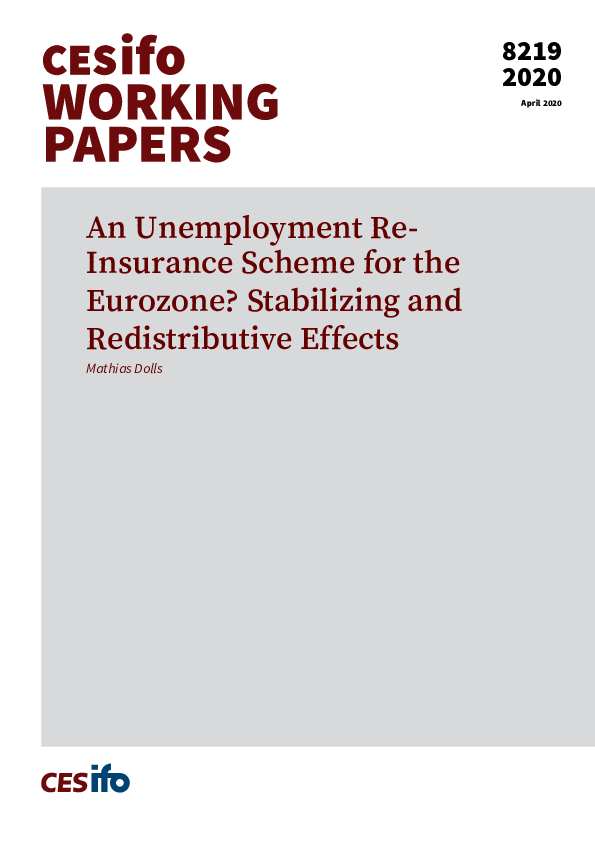An Unemployment Re-Insurance Scheme for the Eurozone? Stabilizing and Redistributive Effects
CESifo, Munich, 2020
CESifo Working Paper No. 8219

This paper develops a decomposition framework to study the importance of different stabilization channels of an unemployment re-insurance scheme for the euro area. Running counterfactual simulations based on household micro data for the period 2000–16, the paper finds that the re-insurance would have cushioned on average 12% (8%) of income losses through interregional (intertemporal) smoothing. These results suggest that the smoothing effect of the re-insurance which is due to asymmetries in labor market shocks would have raised the income insurance of a typical unemployment insurance scheme in the euro area by more than 50%. The simulated re-insurance scheme would have been revenue-neutral at EA-19, but not at the member-state level. Average annual net contributions would have amounted to -0.1–0.1 per cent of GDP. The paper discusses how different variants of the re-insurance might affect the risk of moral hazard.
Public Finance
Fiscal Policy, Macroeconomics and Growth